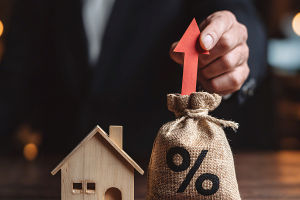In the intricate ecosystem of modern economies, hyperinflation represents one of the most dangerous threats to personal and national wealth.
While moderate inflation is often seen as a sign of a healthy, growing economy, hyperinflation is a rapid, excessive, and uncontrollable increase in prices destroys more than just purchasing power.
The Mechanics of Hyperinflation: When Money Loses Its Anchor
At its core, hyperinflation occurs when a country's central bank prints money excessively without the backing of actual economic growth. This often stems from a fiscal crisis, global volatility, or loss of confidence in the monetary system. Unlike typical inflation where prices rise 2-3% annually, hyperinflation can reach monthly inflation rates above 50%.
The Impact on Personal Savings: A Race Against Time
Wealth stored in cash or traditional savings accounts quickly becomes worthless during hyperinflation. Suppose you saved the equivalent of $10,000 in your local currency for retirement. If hyperinflation hits and the currency loses 90% of its value within months, your savings are suddenly worth $1,000 or even less in purchasing terms.
This isn't just theoretical. In some economies affected in the past decade, workers found their wages couldn't buy a week's worth of food. Pensioners, relying on fixed incomes, were pushed into poverty almost overnight. The value of time spent earning and saving is erased—turning decades of work into nothing more than meaningless digits.
Asset Distortion: Not All Investments Survive
While tangible assets like real estate or commodities often retain value better during inflationary periods, hyperinflation distorts even these markets. Prices become erratic. Property owners may find it nearly impossible to sell or accurately price their assets due to rapidly changing currency values. In some cases, real estate bubbles inflate alongside hyperinflation, only to crash when market panic and economic instability override asset demand.
Equity markets, too, suffer from plummeting investor confidence and currency flight. Even cryptocurrencies and decentralized assets, often touted as inflation hedges, show volatility during uncertainty and lack of infrastructure making them unreliable safe havens in real-world hyperinflation crises.
Social and Economic Collapse: Wealth Is Not Only Numbers
The destruction caused by hyperinflation extends beyond spreadsheets. When money fails to function as a medium of exchange or a store of value, societies unravel. Barter systems re-emerge. Civil servants demand payment in foreign currencies or goods. Economic activity becomes inefficient and chaotic.
Middle-income earners, who traditionally drive consumer spending and investment, are hit hardest. Their purchasing power vanishes, while the ultra-wealthy shift assets abroad or into hard currency, widening inequality. Social unrest, soaring crime rates, and mass emigration often follow. The World Bank noted in a 2023 analysis that hyperinflation has a direct correlation with migration outflows, particularly among skilled labor. In such environments, economic recovery becomes generational not seasonal.
Lessons from Modern Economies: Hyperinflation Isn't Just History
While hyperinflation is often associated with 20th-century events, its threat is very much alive today. In the post-pandemic period, a mix of expansive stimulus policies, disrupted supply chains, and global volatility has heightened inflationary pressures in multiple countries. "Hyperinflation can take virtually your entire life's savings, without the government having to bother raising the official tax rate at all." — Thomas Sowell, economist.
How to Safeguard Wealth in the Shadow of Hyperinflation
While hyperinflation cannot always be predicted with precision, there are strategic financial measures to mitigate its effects:
Diversify Across Currencies: Keeping part of savings in stable foreign currencies or inflation-protected securities reduces single-market exposure.
Invest in Inflation-Resistant Assets: Commodities, real estate in stable markets, and certain government bonds can help preserve purchasing power.
Avoid Holding Cash Excessively: In hyperinflation scenarios, idle cash is a depreciating asset. Instead, consider short-term value preservation instruments.
Monitor Macroeconomic Indicators: Rising budget deficits, central bank independence erosion, and persistent trade imbalances are early warning signs.
Hyperinflation does not knock on the door. It storms in, quietly at first, then with thunder. For individuals, families, and nations alike, the cost of unpreparedness is staggering. Understanding its mechanisms and proactively adjusting one's financial strategy are no longer luxuries—they are necessities.


